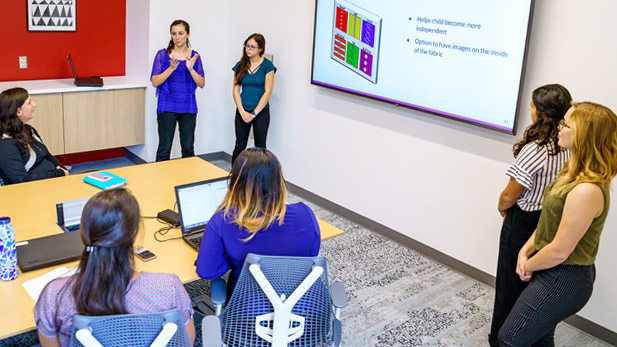Multidisciplinary Capstone Offers Hard Challenges, Soft Skills

The new, year-long multidisciplinary capstone project helps students learn to work with a team and solve problems together.
Engineers’ working styles vary according to each individual’s job requirements, specialty and temperament. But almost everyone must be able to work with a team, solve problems together and interact well despite their differences.
The new, year-long Multidisciplinary Capstone (MDS 410, 420 and 430) helps students learn just those skills, according to Associate Professor of Mechanical Engineering Jay McCormack, Ph.D., who oversees the course.
McCormack says the multidisciplinary approach reflects the mix of skills needed in real-world engineering jobs – or, for that matter, in each professional’s portfolio. “I have three degrees in mechanical engineering,” he says. “The first job that I had was writing software to solve electrical engineering problems.”
Multidisciplinary Capstone teams typically comprise about four students pursuing a variety of majors. In addition to mechanical engineering, these can include computer science, biomedical engineering, computer engineering, electrical engineering or software engineering. McCormack notes that some majors – notably, robotics – are inherently interdisciplinary, while others may involve less collaboration with other fields.
Capstone projects are hands-on, practical efforts that involve designing, building and testing a functional prototype or improving an established process. All require extensive planning, documentation and interaction with the client. The clients may be in-house, such as a faculty member needing a specialized research tool, or an outside company or organization.
Two teams are working with Reach Services in Terre Haute to develop improved toys and communication devices for the children with special needs who are their clients.
Clients benefit not only from help with the challenges they bring to the student teams, but also a higher profile on campus and engagement with a prospective workforce. The students, says McCormack, enjoy a taste of real-world collaboration. “A lot of work they do is not only going to be with other engineers, but also marketing, sales, business operations and manufacturing staff.”